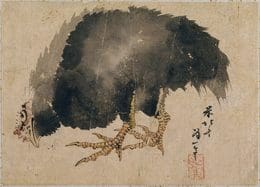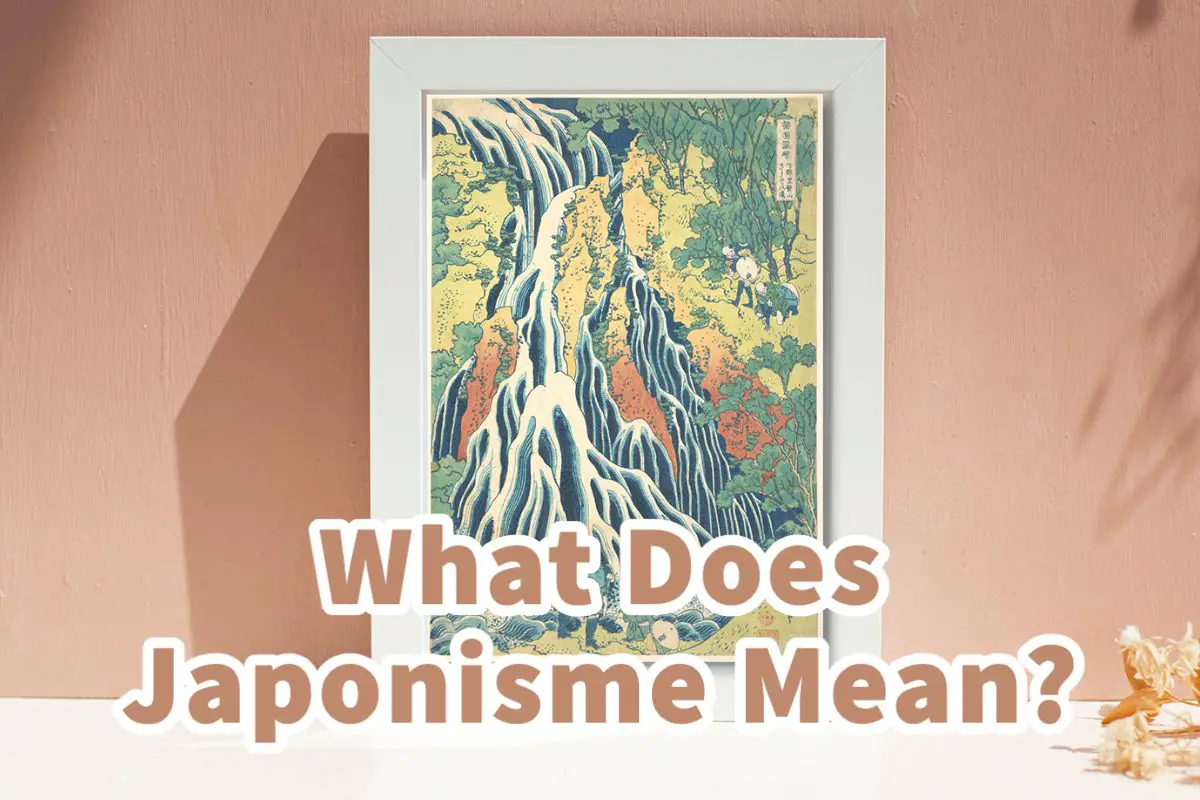When we speak about European art, we also need to talk about Japanese art’s influence on European and Western art. Many artists have been influenced by Japanese art.
The term Japonisme is about the influence of Japanese art on European culture and arts. Most notably, Japanese woodblock prints influenced the Impression art movement. The Japanese Ukiyo-e woodblock print artists inspired many prominent artists from the Impressionism art movement. Japanese art also influenced European theatre, gardens, and museums; it impacted many parts of European society.
Table of Contents
Japonisme Meaning
The term Japonisme or Japonism is about Japanese art, culture, and aesthetics in European art, especially the Impressionism and Post-Impressionism art movements. Without the Japanese influence in art, particularly the Japanese woodblock prints, European art may not have been the same.
The Duitch trading ships brought the Japanese Ukiyo-e Woodblocks on their cargo ships first. By the 1860s, the Japanese woodblock prints became very popular.
I am unsure if those ship traders understood how much the art would impact European art for years to come when they brought the Japanese art and woodblock prints back.
The interest in Japanese goods in Europe was heightened when Japan opened up its ports for trade in 1853. You can imagine some European traders going around some of the Japanese markets and seeing the Ukiyo-e woodblock prints and wondering whether there could be an interesting in Europe
The woodblock prints in Japan were probably plentiful and easy to get as they were produced for the masses and would have been relatively cheap.
After 1853, when the trade opened up between Japan and Europe, Japanese goods like silks, fans, and porcelains poured into the European markets. Japan and all things Japanese became very popular with the European public and artists.
The influence of Japanese woodblock prints influenced the European Impressionist painters and influenced Art Nouveau and Cubism.
Japanese art also influenced the theatre in Europe. In 1876, Gibert and Sullivan produced a very popular play called Mikado. It was so popular that seventeen European companies performed it 9,000 times during the first two years of its premiere.
Japan also influenced European gardens; Japanese gardens directly influenced several prominent gardens and parks during the late 19th and early 20th centuries.
In the United States, many collectors started to collect Japanese artifacts. Many US Museums today still have significant Japanese collections in their museums.

About Japonisme and European Artists
There is no doubt that many European painters were influenced by Japanese art. As trade started to open up with Japan and the rest of the world, trading ships began to bring back many Japanese goods, including Ukiyo-e woodblock prints.
We can not talk about Japonism and art without discussing Ukiyo-e woodblock prints. Many European artists were looking for alternatives to the strict European artistic methodologies of that day – and they found inspiration in these Japanese woodblock prints.
The French Artist Felix Bracquemond found a copy of a sketchbook by the Japanese woodblock artist Hokusai Manga at his printer, Auguste Delâtre. His discovery helped start the interest in Japanese woodblock prints for many European artists – especially the French Impressionism artists.
With these Japanese woodblock prints, the European painters were inspired by how the Japanese executed their art. The Japanese woodblock prints had a quality that lacked perspective or was asymmetrical – they had flat areas—that used solid colors. Japanese artists would often place the subjects off-center.
These woodblock prints also had elongated forms, and they cropped their images at very unusual angles. When perspective and form were influential in Europe, the Japanese woodblock prints showed that being asymmetrical and creating an illusion of three-dimensional space was essential. It opened up the European artist’s eyes to another way of painting and producing artwork.
Here are some of the European artists that were influenced by Japanese art: Alfred Stevens, James Tissot, James McNeill Whistler, Edouard Manet, Claude Monet, Vincent Van Gogh, Edgar Degas, Pierre-Auguste Renoir Camille Pissarro, Paul Gauguin, Henri de Toulouse-Lautrec, Mary Cassatt, George Hendrik Breitner, Bertha Lum, William Bradley, Aubrey Beardsley, Arthur Wesley Dow, Alphonse Mucha, Gustav Klimt, Pierre Bonnard, Frank Lloyd Wright, Charles Rennie Mackintosh, Louis Comfort Tiffany, Helen Hyde, and George Ferdinand Bigot
As you can see from this list, many great European and even American artists are on his list; they were directly influenced by Japanese art. Japonisme or Japanese art, influences and inspires me to be a better artist.
Frequently Asked Questions
What does Japonisme mean?
Japonisme refers to the influence of Japanese art and culture on European and Western art. It encompasses the impact of Japanese aesthetics, particularly from the Edo period, on various aspects of European society.
How did Japanese woodblock prints influence European art?
Japanese woodblock prints, particularly those from the Ukiyo-e tradition, played a significant role in shaping the Impressionist art movement in Europe. The unique techniques and subject matter of these prints inspired prominent artists of the time.
Which artists were influenced by Japanese Ukiyo-e woodblock prints during the Impressionism art movement?
Notable artists such as Vincent van Gogh, Claude Monet, and Edgar Degas were influenced by Japanese Ukiyo-e woodblock prints. The use of bold colors, flattened perspectives, and everyday scenes found in Japanese prints left a lasting impact on these artists.
In addition to visual arts, how did Japanese art influence other aspects of European culture?
Japanese art had a broad impact on European culture, extending beyond visual arts. It influenced European theatre, gardens, and museums, contributing to a broader appreciation for Japanese aesthetics and cultural elements.
How did Japonisme contribute to the development of the Impressionist art movement?
Japonisme introduced new artistic concepts and techniques to European artists, challenging traditional Western artistic norms. The influence of Japanese art, with its emphasis on capturing fleeting moments and nature, played a pivotal role in the evolution of the Impressionist style.
Were there specific characteristics of Japanese art that captivated European artists during the Japonisme movement?
European artists were particularly drawn to the use of vibrant colors, asymmetry, and nature-inspired themes in Japanese art. The simplicity and elegance found in Japanese aesthetics were a departure from traditional Western artistic styles.
How did Japonisme impact European society beyond the art world?
Japonisme had a broader societal impact, influencing fashion, interior design, and even daily life. Japanese motifs and styles became popular in European homes, and there was a growing fascination with Japanese culture among the elite.
Did Japonisme influence only Western art, or were there reciprocal influences on Japanese art?
While Japonisme primarily denotes Western influence by Japanese art, there were reciprocal influences. The encounter with Western art introduced new ideas and techniques to Japanese artists, leading to a blending of artistic styles known as Yōga (Western-style painting) in Japan.
Are there specific examples of Japanese motifs or themes that became popular in European art during the Japonisme movement?
Cherry blossoms, geishas, and scenes from traditional Japanese theater, like Kabuki, were among the popular motifs that found their way into European art during the Japonisme movement. These elements added a touch of exoticism to Western artistic expressions.
How long did the Japonisme movement influence European art, and what impact does it have on contemporary art today?
The Japonisme movement had a significant impact from the late 19th century through the early 20th century. While its prominence waned over time, its influence is still visible in contemporary art, with artists continuing to draw inspiration from Japanese aesthetics and cultural elements.
Anita Louise Art is a website dedicated to art education, great artists worldwide, and inspiring others to find and create their art. #ArtThatMakesYouSmile #ArtThatMakesYouHappy
Anita Louise Art is dedicated to art education, great artists, and inspiring others to find and create their art. We love art that uplifts and inspires. #ArtToMakeYouSmile! #ArtToMakeYouHappy!
If you want to see any of my art, you can find out more by clicking here. If you are interested in what inspires me and my paintings, you can discover more by clicking here.
We have a free newsletter and would love you to be part of our community; you can subscribe to the newsletter by clicking here. If you have any questions, I would be happy to talk to you anytime. You can reach me, Anita, by clicking here.
Subscribe to our Anita Louise Art YouTube Channel with great videos and information by clicking here.
Join us for our podcast “5 Minutes With Art.”Spend 5 minutes a week with us to discover and learn about great art and artists. You can find out more about our podcast by clicking here.
Related Questions
What Are Some Japanese Woodblock Print Characteristics?
There are many characteristics of a Japanese woodblock print, from the woodblock print title, artist name, and publisher’s seal; other features also include the color and subject matter. Japanese woodblock prints also have different artistic art movements.
By clicking here, you can learn more by reading What Are Some Japanese Woodblock Print Characteristics?.
What Is A Japanese Woodblock Print?
A Japanese woodblock print is, as the name implies, a print that is made by using carved woodblock and applying ink on the woodblocks to print a design on paper. The Japanese woodblock artists used the woodblocks to print artistic prints and even books. Artists have used the woodblock print technique in Japan for hundreds of years.
You can learn more by reading What Is A Japanese Woodblock Print? by clicking here.


